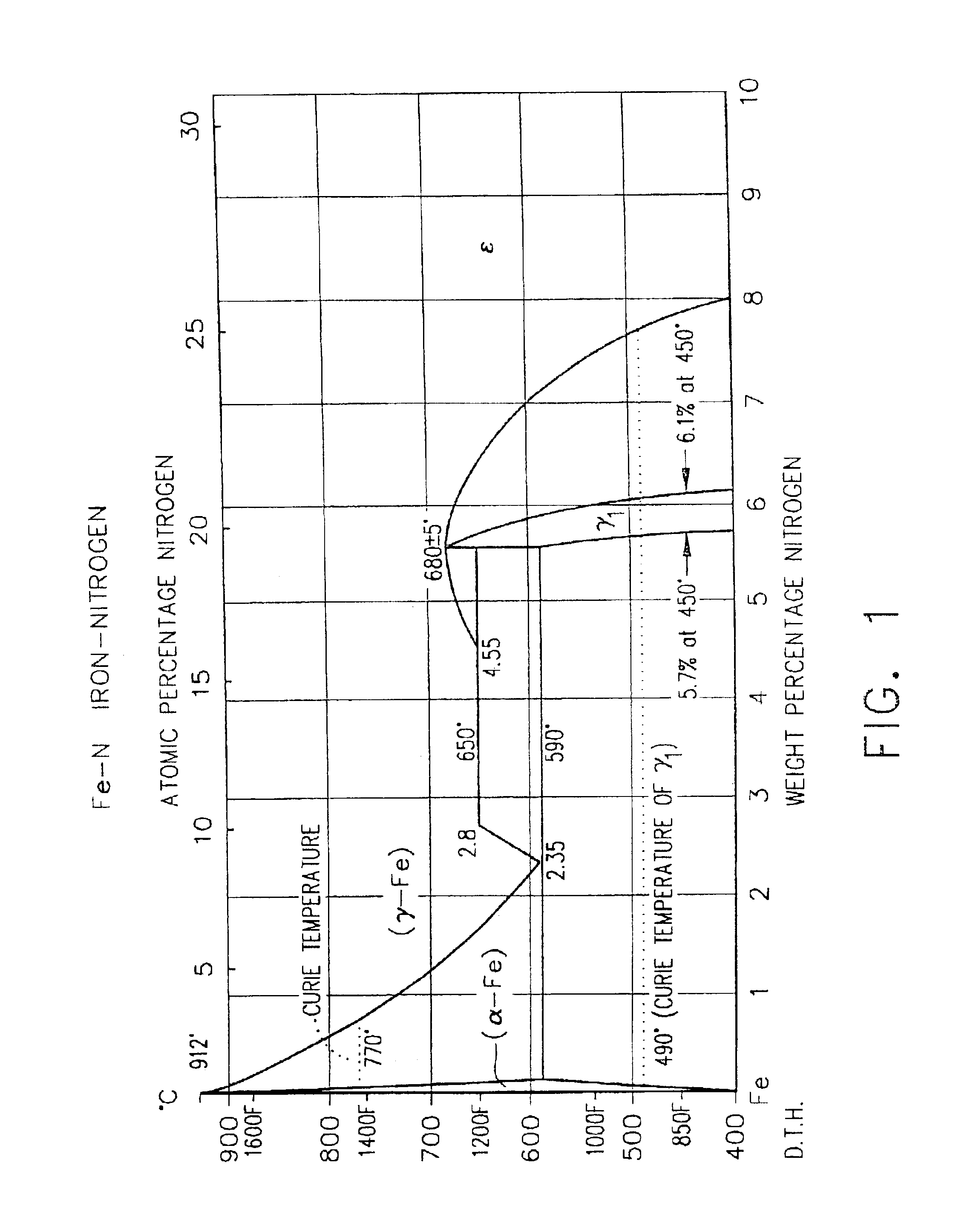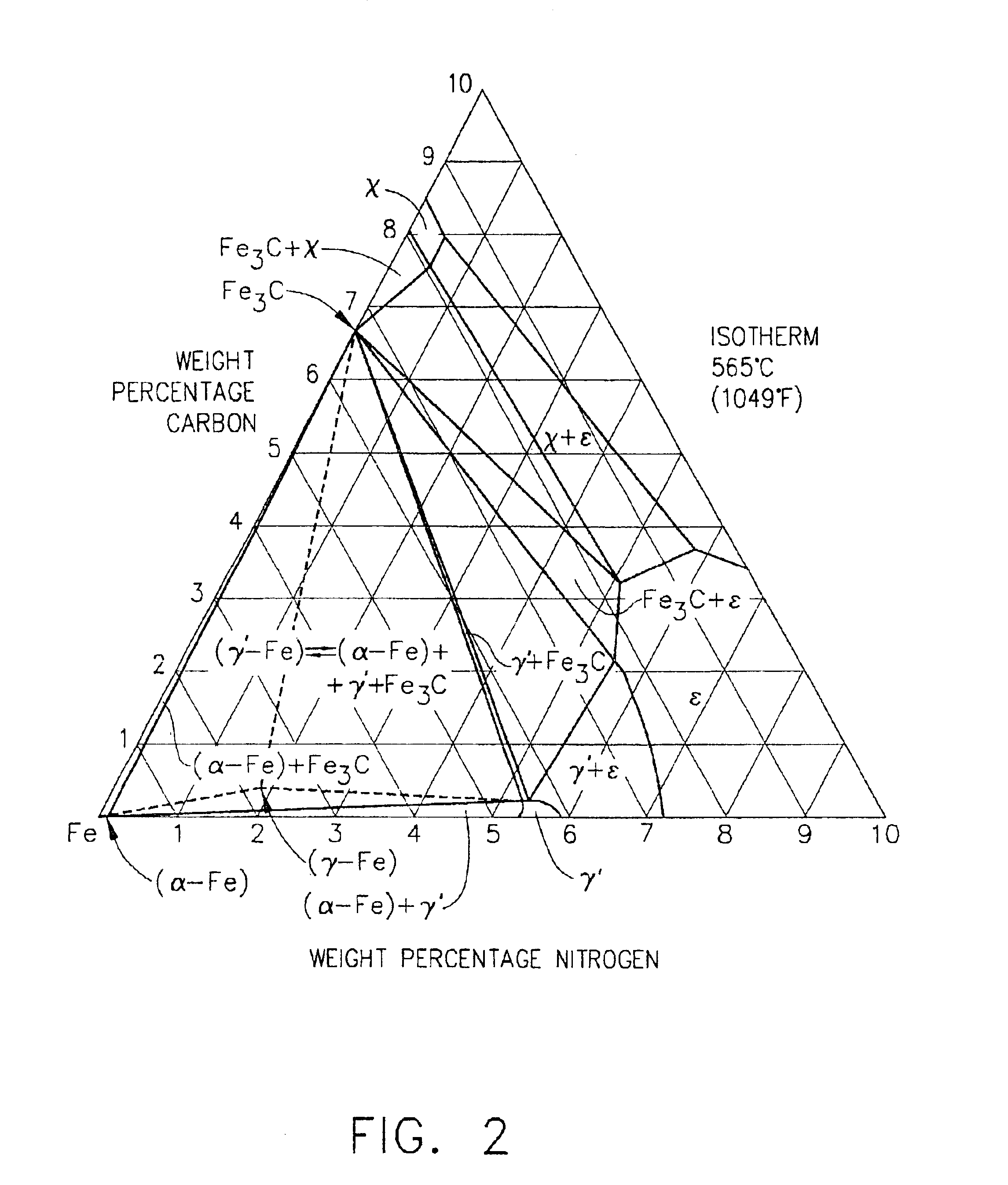Spall propagation properties of case-hardened M50 and M50NiL bearings
a case-hardened, bearing technology, applied in the direction of furnaces, heat treatment equipment, manufacturing tools, etc., to achieve the effect of shortening the life of the bearing, high hardness, and reducing the load
- Summary
- Abstract
- Description
- Claims
- Application Information
AI Technical Summary
Benefits of technology
Problems solved by technology
Method used
Image
Examples
example 1
[0032]An M50NiL specimen was nitrided in accordance with prior art practices as discussed above. The specimen was subjected to a nitrogen atmosphere sufficient to permit nitrogen diffusion into the exposed surfaces of the specimen at a temperature in the range of 800-1100° F. up to 80 hours. The nitriding successfully case-hardened the specimen, producing a surface hardness of about 70 HRC. The specimen was sectioned. A photomicrograph of the sectioned specimen is shown in FIG. 3. The intergranular nitrides are clearly visible as a white phase at the surface and immediately below the surface of the specimen. A microprobe of the specimen is provided in FIG. 4. This microprobe discloses a nitrogen content of about 10% by weight at the surface of the specimen, which drops to about 2% by weight at a depth of about 50-150 microns, and then drops below 2% at a depth greater than about 150 microns. This high nitrogen content at and below the surface corresponds to the formation of the whit...
example 2
[0038]An M50NiL specimen was nitrided in accordance with the present invention as discussed above. The specimen was subjected to a partial pressure of nitrogen at a nominal temperature of 900° F. to achieve a case depth of about 300 microns (about 12 mils). The nitriding successfully case-hardened the specimen, producing a surface hardness of about 70 HRC. The specimen was sectioned. A photomicrograph of the sectioned specimen is shown in FIG. 5. The photomicrograph indicates that the specimen is substantially free of intergranular nitrides at the surface and in the near-surface region. A microprobe of the specimen is provided in FIG. 6. This microprobe discloses a nitrogen content of about 2% by weight at the surface of the specimen, which drops gradually to about 1% by weight at a depth of about 200 microns, and then drops gradually to about 0.5% at a depth of about 300 microns. This nitrogen content is sufficiently high to provide a case-hardened surface, but not so high as to pr...
PUM
| Property | Measurement | Unit |
|---|---|---|
| temperature | aaaaa | aaaaa |
| temperature | aaaaa | aaaaa |
| time | aaaaa | aaaaa |
Abstract
Description
Claims
Application Information
 Login to View More
Login to View More - R&D
- Intellectual Property
- Life Sciences
- Materials
- Tech Scout
- Unparalleled Data Quality
- Higher Quality Content
- 60% Fewer Hallucinations
Browse by: Latest US Patents, China's latest patents, Technical Efficacy Thesaurus, Application Domain, Technology Topic, Popular Technical Reports.
© 2025 PatSnap. All rights reserved.Legal|Privacy policy|Modern Slavery Act Transparency Statement|Sitemap|About US| Contact US: help@patsnap.com



